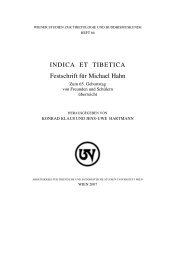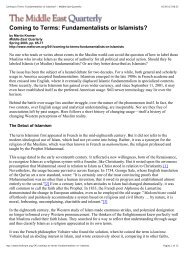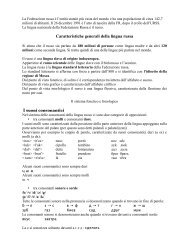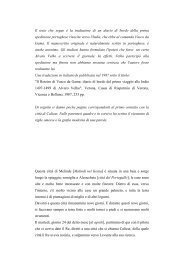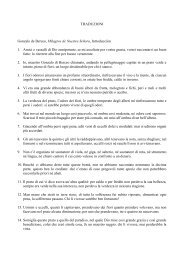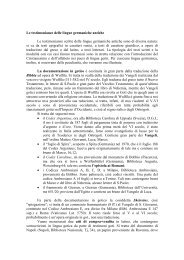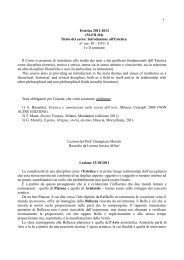Create successful ePaper yourself
Turn your PDF publications into a flip-book with our unique Google optimized e-Paper software.
commentators on these verses of the SU and also Ravisrljiii'ina in his GBh<br />
(these stanzas are also quoted in the -,?Y) diverge on only a few points (see<br />
below pp. 115-19,280-83)40.<br />
S.B. Dasgupta (1969: 107-8) gives an interesting explanation of the<br />
meaning of the five signs mentioned in the GSU according to a MS<br />
commentary on the MmmakaJikatantra preserved in Paris (Bibliotheque<br />
Nationale, Paris, Sans. No. 83, p. 45b): "In the commentary on the Mmmakalika-tantra<br />
it has been explained that the sign of mirage signifies the<br />
knowledge about the nature of the world, which at that time appears to the<br />
yogin to be as illusory as a mirage. When the illusory nature of the<br />
Dhmmas is thus realised, there remains no appearance (pratibhasa) , and,<br />
therefore, everything appears to be smoky, a mere illusory happening<br />
through the collocation of the causes and conditions like the origination of<br />
an elephant in magic; this dependent origination (pratitya-samutpada) is<br />
the smoky nature of the world and hence is the second sign. Again as for<br />
the third sign it is said that as the firefly shines in the sky now and then for<br />
a single moment, so also in this stage perfect knowledge appears through<br />
the void-nature of the Dharmas like momentary flashes and hence is the<br />
appropriateness of the third sign. In the fourth stage knowledge becomes as<br />
bright as a burning lamp and in the fifth or the final stage it becomes like<br />
the clear blue mid-day sky of autumn".<br />
2) The second limb of the yoga, contemplation (dhyiina), consists in<br />
stabilizing the mind and consolidating the image arising at the end of the<br />
signs. It takes place in five phases corresponding to the five moments into<br />
which the first of the four dhyanas (jhana) was divided in ancient<br />
Buddhism41 : examination (vitm-ka), analysis (vieara), joy (Pdtl) , bliss<br />
(sukha) and the fixedness of thought on a single object (eittaikagratif)42. In<br />
described in the HT (I.ii, 28) and explained in the HTPT by Vajragarbha (Kaiser Library,<br />
Kathmandu, MS 128, NGMPP, Mf. CI4/6, fol. 42a).<br />
Stanzas' of the HT are numbered here according to the edition by G.W. Fan'ow and l.<br />
Menon (1992).<br />
40 Commenting on SU, 24-34, rNam-par rgyal-ba-dbang-po (Vijayendra) strictly<br />
follows Naropa's gloss (see dBan mdor-brtan-pa'i bljed-byang (SUTippaJ}lJ, Peking ed.,<br />
vol. 48, # 2104, fols. 6b3-lOb4).<br />
41 Cf., for instance, Sarpyutta Nikaya XVLix-xi (PTS, vol. II, p. 210 ff), Majjhima<br />
Nikaya l.v, 3 Mahavedallasutta (PTS, vol. I, p. 294), Digha Nikaya XXXIILi, 11 (PTS, vol.<br />
III, p. 222). See also Zigmund-Cerbu 1963: 132; Griinbold 1983a: 32; Gnoli 1994: 96.<br />
42 Sometimes cittaikagrata is called samtidhi: cf. Sarpyutta Nikaya XXXV, 99 and<br />
commentary (Sarattha Pakasini by Buddhaghosa), ADhK VIII, 7 (ed. by S.D. Sastrl, p.<br />
28




